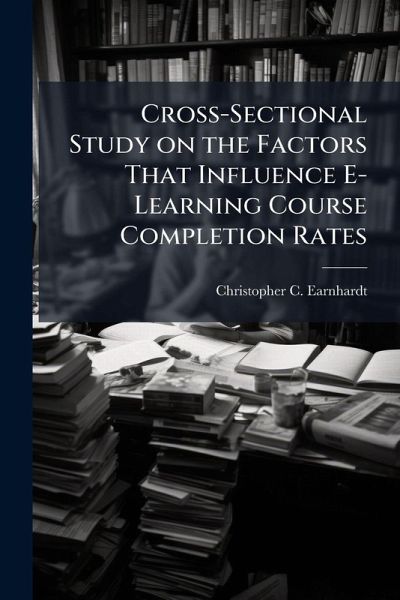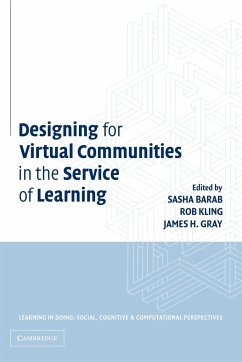
Cross-Sectional Study on the Factors That Influence E-Learning Course Completion Rates
Versandkostenfrei!
Versandfertig in über 4 Wochen
17,99 €
inkl. MwSt.
Weitere Ausgaben:

PAYBACK Punkte
9 °P sammeln!
Completion rates for web-based courses tend to lag behind their traditional classroom counterparts, sometimes as much as 40% (Carter, 1996; Phipps and Merisotis, 1999; Zielinski, 2000). Thurston and Reynolds (2002) employed motivational constructs to explain why some people persist while others drop out of web-based courses. Their analysis of eight web-based courses and responses from 497 active duty Air Force students indicated that completion goals, off-task distractions, availability of feedback for self-regulation, and continued confidence were important factors that distinguished those wh...
Completion rates for web-based courses tend to lag behind their traditional classroom counterparts, sometimes as much as 40% (Carter, 1996; Phipps and Merisotis, 1999; Zielinski, 2000). Thurston and Reynolds (2002) employed motivational constructs to explain why some people persist while others drop out of web-based courses. Their analysis of eight web-based courses and responses from 497 active duty Air Force students indicated that completion goals, off-task distractions, availability of feedback for self-regulation, and continued confidence were important factors that distinguished those who completed their courses from those who did not. One limitation for the 2002 study was its inability to assess the combined effects of these factors. This current study addresses this limitation by assessing the influence of motivational factors on transfer of learning to the work environment and intentions to pursue e-learning courses in the future. A survey was administered to 1,946 active duty and civilian students who had enrolled in one of the 20 courses offered by the Air Force Institute of Technology's Virtual Schoolhouse. Results were analyzed using the LISREL (Joreskog and Sorbom, 1993) structural equation modeling program. Analysis of the 791 usable responses provided strong evidence for the hypothesized relationships. Practical and theoretical implications of this research are discussed. This work has been selected by scholars as being culturally important, and is part of the knowledge base of civilization as we know it. This work was reproduced from the original artifact, and remains as true to the original work as possible. Therefore, you will see the original copyright references, library stamps (as most of these works have been housed in our most important libraries around the world), and other notations in the work. This work is in the public domain in the United States of America, and possibly other nations. Within the United States, you may freely copy and distribute this work, as no entity (individual or corporate) has a copyright on the body of the work. As a reproduction of a historical artifact, this work may contain missing or blurred pages, poor pictures, errant marks, etc. Scholars believe, and we concur, that this work is important enough to be preserved, reproduced, and made generally available to the public. We appreciate your support of the preservation process, and thank you for being an important part of keeping this knowledge alive and relevant.












